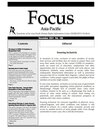The Petitioners were residents in a locality in Islamabad. The Water Resources and Power Development Authority (WAPDA) was to construct an electrical grid station in that area. The Petitioners protested on the ground that the electromagnetic field created by the high voltage transmission lines would be hazardous to their health. Moreover, the designated green belt in that area would be destroyed. Thus aggrieved by the proposed construction, they filed a petition in the Supreme Court. They placed on record several international studies and reports that linked electromagnetic radiation with cancer, depression and heart disease among other health problems. The Respondent Government however, contended that the plan was safe and risk free. Moreover, the Respondent contended that the petition did not specify any fundamental rights that were violated and hence was not maintainable.
Decision and Reasoning
The Court held that although the studies provided by the Petitioners were recent and up-to-date, it was not possible to ascertain conclusively whether there was a causal link between the effects of electromagnetic fields and human health. However, because there might be "lurking danger" in electromagnetic radiation, the best course of action would be to err on the side of safety even if the studies were inconclusive. Furthermore,the research conducted by the Respondent Government was more than 20 years old, and hence ill equipped to assuage the Petitioners' fears. The Court held that the Respondent Government should therefore adopt a precautionary approach akin to Principle No. 15 in the Rio Declaration. The Court also held that an independent Commission should be established to determine how to balance the need for energy production and possible hazards to human life. This Commission would be "manned by internationally known and recognised scientists having no bias and prejudice." It would examine claims relating to setting up of electrical grid stations and its opinion would be sought before any such construction. With the consent of both parties, the Court appointed National Engineering Services Pakistan Pvt. Ltd (NESPAK) as this Commission. NESPAK would “examine the plan and the proposals/schemes of WAPDA in the light of the complaint made by the Petitioners and submit its report” and “suggest any alteration or addition which may be economically possible for constructing a grid station” if necessary. The Court finally held that the petition was maintainable. It held that the Petitioners had a credible fear of their constitutionally guaranteed right to life being violated due to the proposed acts of the Respondent Government, and that the right to life was broad enough to encompass situations such as the present case. The Petitioners were thus entitled to approach the courts for a preventive remedy. Moreover, the Court held that the effects of electromagnetic radiation on human health would be largely unknown to people residing nearby, who would suffer silently without realizing that their lives were at risk. Therefore, it was in the interest of the citizens at large that such a petition could be filed.
Pakistan: Shehla Zia and Ors v. WAPDA, PLD 1994 SC 693
By admin on December 29, 1994 10:04 AM







